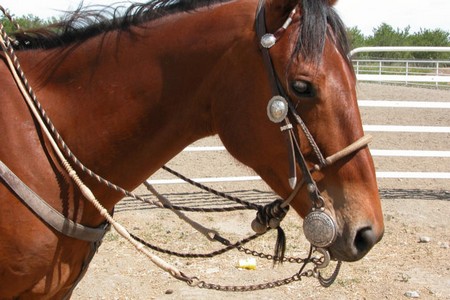Selecting the right bit for your horse is possibly one of the most important elements for riding safely and ensuring control. Unsuitable bitting can ruin a horse’s mouth permanently, but a rider with bad hands can do as much damage with the kindest bit as a harsh one.
A newly purchased horse may be sold with all their tack. If you find your new horse goes well with you in his old bit, then there is no need for change. If, however, you think you have a problem with control and/or direction, ask an expert to watch you ride and give advice. If possible, try borrowing some different bits to help you make a more informed choice.

How does a bit work? Pressure from the hands via the reins puts pressure on the horse in a variety of ways, depending on the type of bit. The control points will either be the bars of the mouth, the tongue, the lips and corners of the mouth, the roof of the mouth, the curb groove, the poll or the nose.
Types of bits
Bits can be divided into four families—the snaffle, the double bridle, the pelham, and gadget-type bits. There are a large number of different bits within each bit family. Here are just a few examples:
- The snaffle is the most widely used family of bits as it contains bits that are the kindest to the horse and easiest to fit. A jointed snaffle gives a nutcracker effect and acts on the tongue, bars and corners of the mouth.
- The double bridle consists of a curb bit (Weymouth) and a bridoon (snaffle). It is used by more advanced riders and horses when more refined aids are needed. The bridoon raises the horse’s head; engaging the curb bit puts pressure on the bars, tongue and poll and also the chin groove from the curbchain to create flexion at the poll.
- The pelham is a combination of a snaffle and curb in one mouthpiece. The upper ring takes the snaffle rein, allowing the bit to operate in the same way as a snaffle, and the rein for the lower ring engages the curb.
- Gadget-type bits include the gag, the hackamore and the kimblewick with curb. The gag gives a rider more control over a strong horse. It is used with double reins-one rein goes direct to the bit ring, the other to the running cheeks. This allows it to be used either as a standard rein as a snaffle, or the second rein gives extra breaking power through the cheekpieces. The hackamore is a bitless bridle. The cheekpieces of the bit act as levers to put pressure on the nose, poll and chin groove.